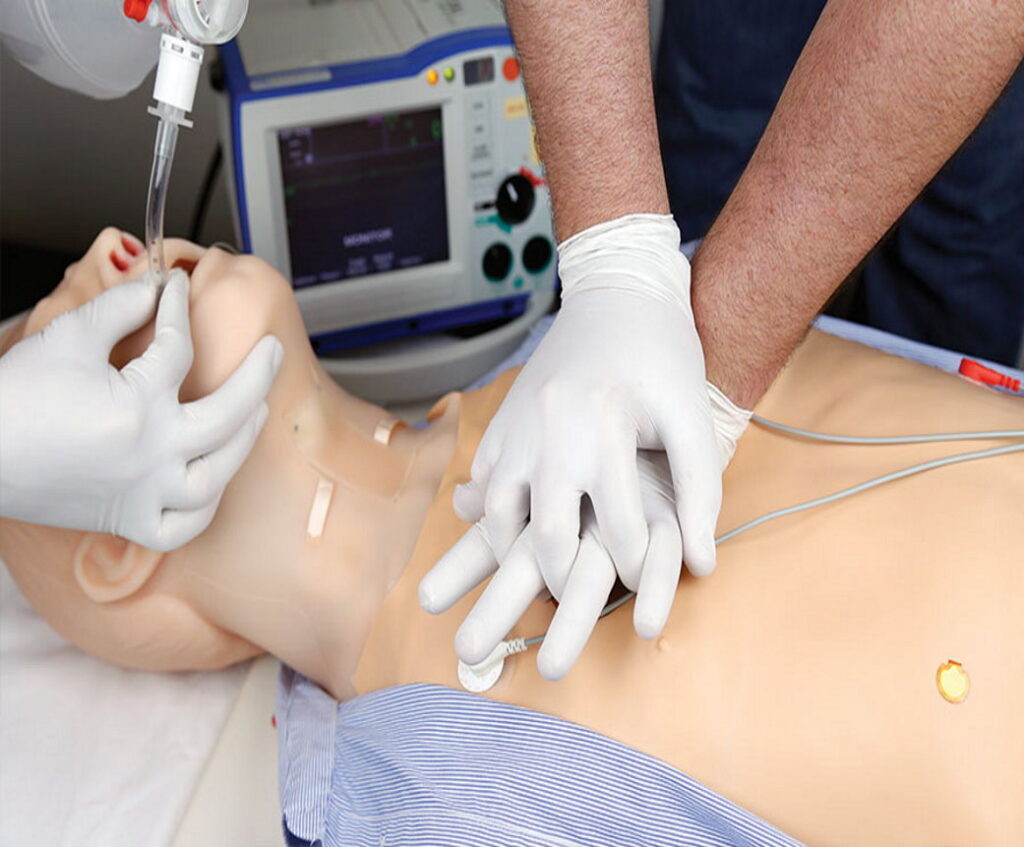Airway
- Oral or nasal intubation: ETT, LMA, King LT
- Programmable difficult airway: Laryngospasm, pharyngeal swelling, tongue edema
- Sensors detect depth of intubation
- Surgical airway: tracheostomy or needle cricothyrotomy
- Unilateral chest rise with right mainstem intubation
- Multiple upper airway sounds
Breathing
- Spontaneous breathing and programmable patterns
- Ventilation is measured and logged
- Gastric distension with excess BVM ventilation
- Select independent left, right, upper, and lower lung sounds
- Chest rise during assisted ventilation
- Tension pneumothorax and bilateral needle decompression sites
- Bilateral chest tube sites at 5th intercostal space
- Optional Real EtCO2
Neurologic
- Active Eyes; programmable blink rate, pupil size, and pupil reaction
- Severe or mild seizures
- Preprogrammed speech responses
- Wireless streaming voice; be the voice of HAL and listen to replies
Cardiac/Circulation
- Normal and abnormal heart sounds, rates, and intensities
- 4-Lead ECG monitoring using real devices; 12-lead ECG capable
eCPR sensors; Chest compressions are measured and logged - Monitor oxygen saturation using your real native oxymeter
- Measurable blood pressure with audible Korotkoff sounds
Visible cyanosis - Bilateral carotid, radial, brachial, femoral, popliteal, and pedal pulses
Bilateral IV sites - Optional virtual drug recognition
- Intraosseous access at tibia
Other
- Bowel sounds 4 quadrants
- Male/Female catheterization
- HAL® S3101 includes
- Tetherless Adult Patient Simulator
- Wireless tablet PC; UNI license
- Automatic Physiologic Control license
- Preprogrammed scenarios library
- Battery charger, BP cuf, surgical trachea kit, pneumo. decompression sites, user guide. Patented; other patents pending
